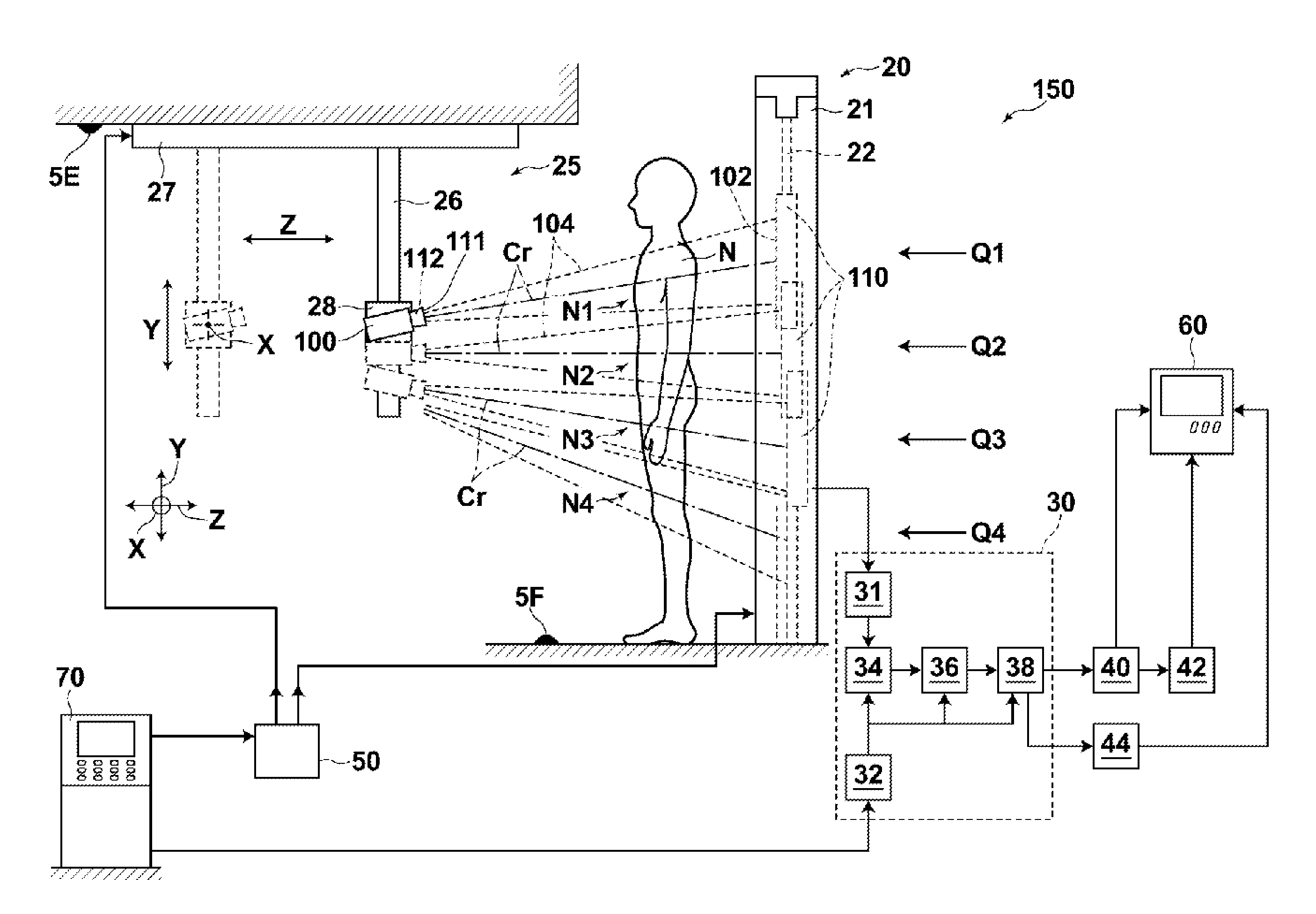Body motion detection device and method, as well as radiographic imaging apparatus and method
a motion detection and body technology, applied in the field of body motion detection, can solve the problems of inefficient retake of images, hinder accurate measurement, and inability to properly join the obtained x-ray images, so as to reduce the exposure dose of the subject, efficiently conduct the retake operation, and improve the effect of retake operation
- Summary
- Abstract
- Description
- Claims
- Application Information
AI Technical Summary
Benefits of technology
Problems solved by technology
Method used
Image
Examples
embodiment claim 1
[0226]A body motion detection device comprising:
[0227]image obtaining means for obtaining a plurality of radiographic images taken by carrying out a plurality of imaging operations with respect to an identical subject, the radiographic images at least partially overlapping with one another;
[0228]local motion vector calculating means for calculating at least one local motion vector representing a local displacement of the subject in an overlapping area between the radiographic images; and
[0229]body motion index value calculating means for calculating a body motion index value attributed to a posture of the subject based on the local motion vector.
[0230]The “body motion index value attributed to a posture of the subject” refers to an index value of a body motion attributed to a posture of the subject when the subject is regarded as a rigid body, and does not include an index value attributed to a motion of an internal organ, such as the heart, lung, intestine, or the like, inside the ...
embodiment claim 2
[0231]The body motion detection device as defined in embodiment claim 1, wherein the body motion index value calculating means calculates an index value of an amount of parallel displacement of the subject as the body motion index value.
embodiment claim 3
[0232]The body motion detection device as defined in embodiment claim 2, wherein the body motion index value calculating means further calculates at least one of an index value of an amount of three dimensional movement of the subject and an index value of an amount of two dimensional movement of the subject as the body motion index value.
PUM
 Login to View More
Login to View More Abstract
Description
Claims
Application Information
 Login to View More
Login to View More - R&D
- Intellectual Property
- Life Sciences
- Materials
- Tech Scout
- Unparalleled Data Quality
- Higher Quality Content
- 60% Fewer Hallucinations
Browse by: Latest US Patents, China's latest patents, Technical Efficacy Thesaurus, Application Domain, Technology Topic, Popular Technical Reports.
© 2025 PatSnap. All rights reserved.Legal|Privacy policy|Modern Slavery Act Transparency Statement|Sitemap|About US| Contact US: help@patsnap.com



